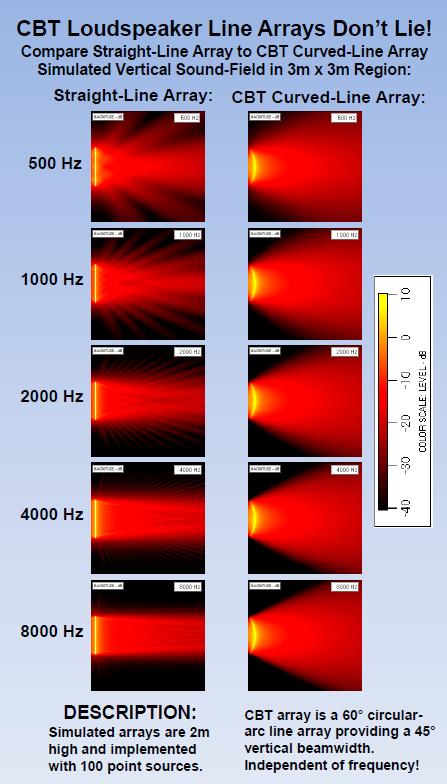The answer is "yes" but width of transducers gets interesting. There are a few ways to go about it.
"Yes" it's one of my stupid ideas?

I am assuming you meant it has some merit. I can see from the picture
@Bjorn posted earlier that it looks pretty wide, not to mention a curve like that would be pretty difficult to make and way beyond my DIY ability. For this reason I am thinking of a linear array with DSP delays. Yes, I know it will require an ungodly number of DAC channels and amplifiers but I am imagining a system where I can turn it into a phased array at the push of a button. However that only controls vertical directivity problem, there is nothing I can do about horizontal directivity apart from waveguides or horns. The solution to
that would be a submarine sonar like partial sphere with drivers pointing in all directions, but that is way too extreme. So maybe something even simpler to construct - a panel speaker with many drivers on it, each with digital delay and shading to create a virtual dome.
Yes I am aware that straight line arrays and curved line arrays radiate sound differently. But I like tinkering and to me, doing it with digital delays opens up the possibility of endless years of fun. But the idea of having to provide >200 DAC and amplifier channels is a bit too crazy for me. I am a hobbyist and not a naval sonar engineer.
Don's illustration does not say whether that straight line array had delays in it or not and what kind of shading pattern was used. I am guessing not, based on other illustrations I saw on his website.
If it's constant beamwidth across frequency, are you SURE it's a bad thing?
I honestly did not know it was a constant beamwidth across frequency. If it is, then horns or waveguides are not needed? I thought it would behave more like a conventional speaker with omni at the bottom and beams at the top. The illustrations I have seen so far (like the cut and paste from Don's website above) shows excellent smooth vertical directivity. Maybe there are spinoramas buried somewhere in this thread, I should go look for them.






